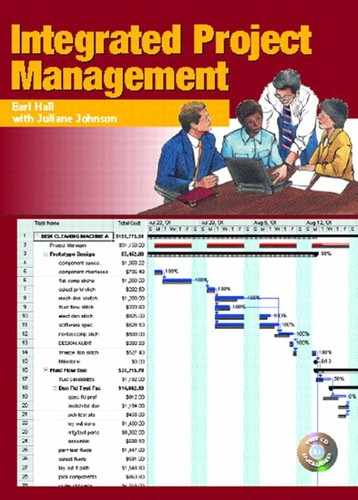The History of Risk Analysis
The problem recognized early in IPM development was to discover how to set up a procedure so risk factors could be added to the project's critical path that would cover task overruns and not pad the project. The objective was to finish the project—not early or late—but at the planned time! In other words, how could one add a risk factor, or series of risk factors, to the Gantt chart that allowed for some overruns but not overstate the overruns?
This problem was approached theoretically and experimentally. We decided that risk analysis should be based on a task-by-task analysis. We recognized that by going into detail, we could improve accuracy. We asked ourselves, “What additional information do task leaders have or have access to that can help with risk analysis?” Discussion of this topic led to focusing on data items. Experienced task leaders generally know or can find out the longest time a task like my task for the project has taken or might take under unusual circumstances. They also can review past experiences and determine what percentage of the time a task like my task for the project over runs its estimated duration.
These are educated estimates that are based on experience. They provide data to use in developing risk factors that can be inserted along the critical path.
Using the risk analysis method a life insurance actuary might use, it was recognized that task facts present a random distribution of overrun possibilities that somewhat resemble the random age distribution at death for a general population. There is an average age expectancy for a population. No one knows in advance which individuals will overrun this expectancy rate, but they know that some will. Annuity life policies must pay monthly annuities to people in the overrun group for as long as each one lives.
How much money should the insurance company set aside to cover these payments? How much additional time should the project manager and the team set aside as a risk factor to cover the overruns from some of the tasks? Insurance actuaries solve these problems by applying statistical analysis to the insurance company's massive body of data. The project manager and the team have only limited data on a project task overrun, which is not nearly enough to justify a statistical analysis.
Could, then, a rule of thumb be developed, based on actuarial philosophy, that would functionally solve this problem? The answer—following some creative trial and error attempts—is yes! Risk analysis as it is presented here is the outcome.
